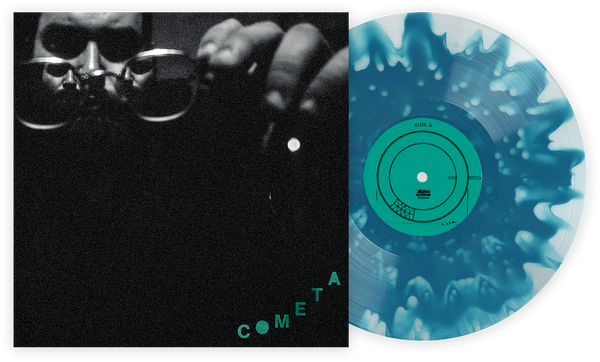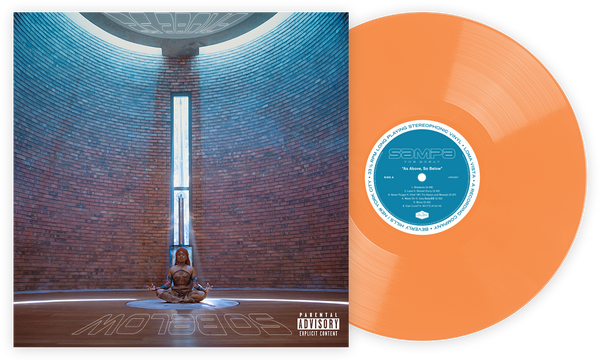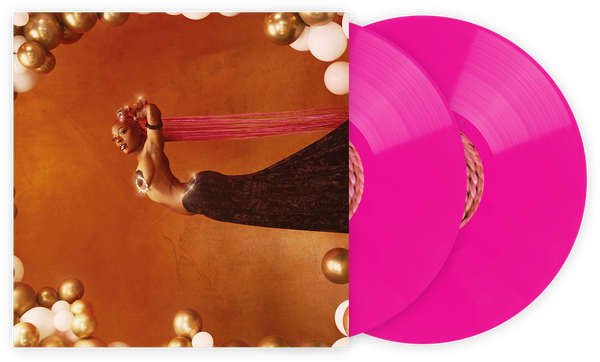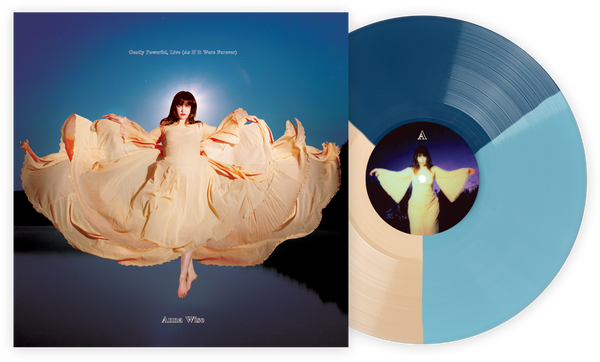Mengingat Grup Jazz Rahasia Prince
The Story Of Madhouse, Who Made Two Albums 30 Years Ago And Disappeared
Pada tahun 1987, Prince merilis Sign ‘O’ The Times, sebuah karya besar yang mencakup seluruh jangkauannya, dari pop psikedelik hingga lagu-lagu lambat dan segala sesuatu di antaranya. Ini adalah album yang melahirkan “U Got The Look” dan “If I Was Your Girlfriend,” menduduki puncak polling Pazz & Jop sepanjang jalan. Namun, di tahun yang sama saat ia merilis apa yang mungkin menjadi album terbesarnya, ia juga mengeluarkan dua album anonim dari jazz fusion instrumental dengan nama samaran Madhouse. Prince akan terjun ke jazz sepanjang karirnya tetapi tidak pernah lagi seutuh hati, tidak pernah selama puncak artistik yang lain. Tiga puluh tahun kemudian, kedua album Madhouse terlupakan kecuali oleh penggemar hardcore si Purple One. Terlepas dari kekurangan mereka, album-album ini menerangi seorang artis yang suka mencoba setiap gaya yang bisa ia lakukan.
Madhouse merilis dua album pada tahun 1987, 8 pada bulan Januari dan 16 pada bulan November. Setiap lagu diberi judul dengan nomor sederhana dan hanya dikreditkan kepada Madhouse. Meskipun mereka berada di bawah label Paisley Park, siaran pers awal mengklaim bahwa grup tersebut adalah kuartet yang terdiri dari pemain keyboard Austra Chanel, pemain ritme Bill dan John Lewis, serta pemain saksofon Eric Leeds. Sebenarnya, semua orang kecuali Leeds adalah fiksi belaka. Seperti Christopher, yang diduga merupakan komposer dari “Manic Monday” oleh Bangles, para musisi ini sebenarnya adalah Prince yang menggunakan nama samaran untuk menyembunyikan keterlibatannya. Prince menyusun dan melakukan dasar dari setiap lagu, menggunakan studio untuk bermain sendiri, sebuah makna ganda yang pasti akan dia hargai. Eric Leeds menambahkan melodi utama pada alat tiup, dan beberapa rekan lainnya seperti Sheila E. sesekali memberikan kontribusi, tetapi ini adalah proyek Prince dengan nama Prince yang dengan sengaja dikesampingkan. Leeds, yang telah menjadi bagian dari rombongan Prince sejak tur Purple Rain, mengingat bahwa kolaboratornya “ingin musik tersebut dianggap berdasarkan nilai intrinsiknya, dan mungkin khawatir jika dirilis sebagai ‘album jazz Prince,’ itu akan lebih menarik perhatian pada ide bahwa Prince akan memainkan jazz daripada pada nilai musik itu sendiri.”
Nilai musik itu sendiri bisa diperdebatkan, tetapi itu menarik sebagai wawasan tentang Prince. Seberapa banyak usaha yang dia lakukan untuk menyembunyikan proyek ini secara komersial, sulit untuk mendengarkan Madhouse dan tidak memperhatikan beberapa nuansa ungu, terutama dibandingkan dengan lagu-lagu dari Times. “Two” memiliki stomp yang penuh gaya dari “Housequake,” dimainkan dengan drum langsung alih-alih MIDI. Suara yang disebut-sebut sebagai suara Minneapolis dari Prince mentransposisi melodi yang ditulis untuk alat tiup ke synthesizer. Di lagu ini, dia melangkah lebih jauh lagi, dengan bagian saksofon yang terdengar seperti seseorang bermain piano. “Thirteen” berfokus pada akor bluesy, dimainkan di alat synthesizer yang dimaksudkan untuk terdengar seperti gitar atau sebaliknya. Suaranya benar-benar terdistorsi hingga menghasilkan kilauan yang tumpul. Suara yang sama dengan “Hot Thing” yang menonjol, sebuah pembalikan yang kontras antara kesan kasar yang kemudian akan mendominasi soundtrack Batmannya. Yang paling jelas adalah dialog yang tersebar di seluruh Madhouse, satu-satunya bagian vokal yang dapat ditemukan. “If I Was Your Girlfriend” dimulai dengan cuplikan dari seorang penjual di trotoar, tetapi “Eleven” membangun seluruh lagu di sekitar loop seseorang yang mengatakan “baby doll house,” lalu ditambahkan dengan baris dari Godfather untuk intro. “Five” lebih merupakan kolase suara daripada lagu, potongan percakapan telepon seperti “Five Star Restaurant, can I help you?” dan “Hi, how ya doin sexy?” saling tumpang tindih dengan ritme snare yang semakin cepat. Petunjuk keterlibatan Prince ada di sana. Ketika sebuah lagu dibuka dengan erangan seorang wanita yang menirukan klimaks, bukan hal yang sulit untuk menebak bahwa artis yang bertanggung jawab atas stiker Parental Advisory mungkin berada di balik tirai.
Leeds tidak mau mempertahankan ilusi rekan-rekan band fiksinya terlalu lama. Pada akhirnya, seperti yang dia ceritakan kepada Matt Thorne dalam Prince: The Man and His Music, dia berpikir “Ini konyol. Ini saya dan Prince membuat rekaman dan biografi saya terlihat lebih baik jika kita katakan ini saya dan Prince.” Dan dia pantas untuk menjaga teman musik tersebut; saksofonnya adalah salah satu sorotan di Sign ‘O’ The Times. Dia muncul di “Housequake,” stabnya yang lambat setara dengan gaya James Brown yang konyol, dan di “Hot Thing” juga, solo eksplosifnya menambahkan sedikit hasrat organik dengan suara mendesis melalui alat brass. Tetapi Leeds juga menjawab setiap lirik lembut dari Prince dengan triplet bergetar di “Slow Love.” Dia bahkan mendapatkan kredit co-writing untuk campuran penuh band “It’s Gonna Be a Beautiful Night,” yang direkam secara langsung di Paris.
Dengan kredit yang disengaja oblique, tidak jelas apakah bagian Leeds sepenuhnya adalah komposisi dia atau co-created dengan Prince. Namun, kontribusi terpenting Leeds untuk Madhouse adalah riff yang langsung. Album-album Prince biasanya tidak menampilkan riff dari otak kadal primitif; dia tentu akan menyimpan mereka untuk album jazznya, untuk dimainkan oleh saksofonisnya. “Ten” mengumumkan dirinya sebagai single yang jelas. Leeds naik dan turun dengan kesederhanaan perkusi yang nakal. Bass rendah yang berdentum terus berlanjut tanpa didampingi sampai ia menyelesaikan melodi dengan empat nada yang dipadatkan menjadi satu ketukan. Saat lagu bergerak, bunyi synth pop masuk dan keluar, tetapi riff itu tidak pernah kehilangan dominasinya. “Six,” single lainnya, dimulai dengan titik balik pada bass yang berbuih tetapi segera memperkenalkan daya tarik utama. Leeds memukul nada yang sama empat kali sebelum melangkah ke bawah, selalu kembali ke nada teratas itu seperti rollercoaster yang diulang. Bagian di “One” bekerja secara terbalik, artikulasi staccato ke atas dan teriakan mengeluh ke bawah. Di luar riff itu, terdengar seperti jazz halus yang stereotip, diiringi oleh piano ceria dan synth yang berputar.
Kelembutan yang ketinggalan zaman sayangnya ada di seluruh album ini. Meskipun dia mendengarkan yang terbaik sepanjang masa seperti Miles, Coltrane dan Duke, Prince tidak bisa mendekati mereka dalam permainan mereka. Gitaris Revolution Wendy Melvoin menggambarkannya dalam buku Thorne sebagai “lebih sebagai orang jazz kontemporer, jenis jazz yang selalu saya sebut sebagai musik saluran cuaca, barang-barang yang Anda dengar di saluran cuaca, sangat halus, dan dia sangat cocok di lingkungan itu, tetapi saya tidak akan meletakkan buku palsu di depan Prince dan berkata, ‘Bisakah kamu memainkan ‘Autumn Leaves’ untuk saya?’” Bahkan di arena itu, kegagalan lebih banyak dibandingkan keberhasilan. Ritme dramatis di “Fifteen” berulang tanpa henti, tidak memberikan kesimpulan yang memuaskan. “Twelve” adalah lagu swing yang tidak menonjol yang akan sangat cocok di latar belakang film noir generik. Kerumunan yang di overdub bertepuk tangan lalu meledak dalam tepuk tangan yang terasa tidak pantas bagi pendengar yang sebenarnya. “Three” dan “Fourteen” adalah balada yang bertujuan lembut tetapi meleset menjadi membosankan. Mereka akan membuat musik elevator yang hebat, sebenarnya.
Setelah 1987 datanglah Graffiti Bridge, Super Bowl, dan fentanyl. Prince bekerja sama dengan Leeds beberapa kali lagi dan menambahkan nuansa jazzy ke dalam karya solonya dari waktu ke waktu. Dia tidak pernah merilis album Madhouse lainnya. Mungkin dia menyadari bahwa dia membutuhkan vokal untuk benar-benar menyampaikan maksudnya. Mungkin dia tidak tertarik lagi pada proyek tersebut setelah keterlibatannya menjadi pengetahuan umum. Mungkin dia hanya bosan. Pada akhirnya, Prince melakukan apa yang ingin dia lakukan, dan jelas dia ingin meninggalkan Madhouse di belakang, bersamaan dengan Vanity 6, Revolution dan bahkan akhirnya namanya sendiri.
Saya menemukan album ini dua tahun lalu di sebuah pameran musik di Chicago. Mata saya awalnya tertarik pada estetika pin-up dari sampul, tetapi langsung tertarik ketika penjual memberi tahu saya bahwa cetakan ini sebenarnya adalah Prince—’80s Prince, lagi pula. Dalam teori, Madhouse adalah hadiah ideal untuk penggalian crate: terawat dengan baik dan sebelumnya tidak dikenal. Pada kenyataannya, lebih menarik daripada menyenangkan. The Purple One terkenal mengunci musiknya yang belum selesai dalam brankas pribadi. Merupakan suatu hak istimewa untuk mendengar dia bermain dengan ide-ide yang pada akhirnya berakhir di sebuah mahakarya seperti Times, bahkan ketika ditransposisi ke genre lain. Album-album Madhouse pada akhirnya hanyalah catatan kaki dalam diskografi Prince, tetapi dengan karier seperti miliknya, bahkan catatan kaki pun sangat berarti.
Jack Riedy is a Chicago-based writer, comedian, and person. He is also the self-appointed world’s biggest Space Jam fan. Read more of his work at jackriedy.com.




